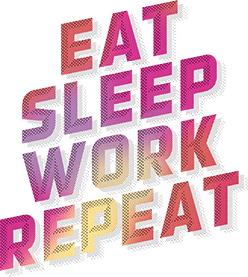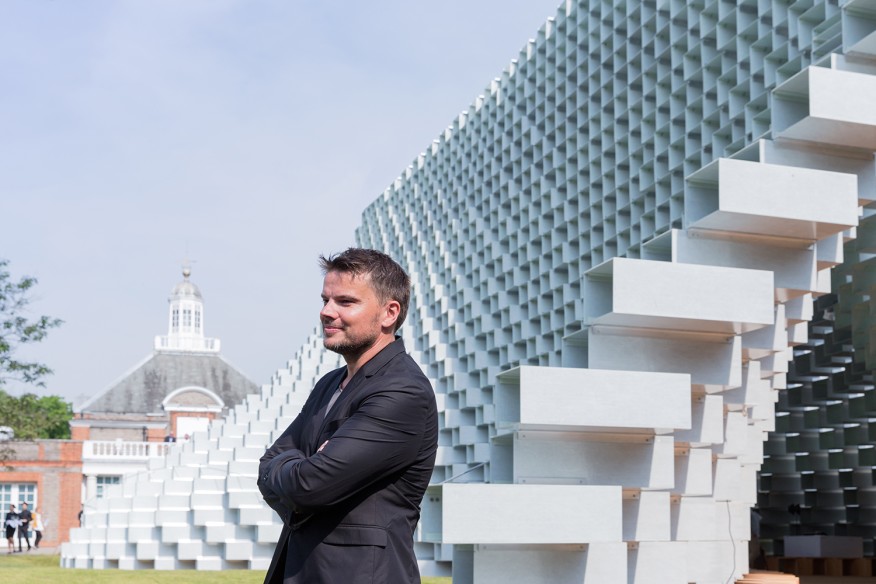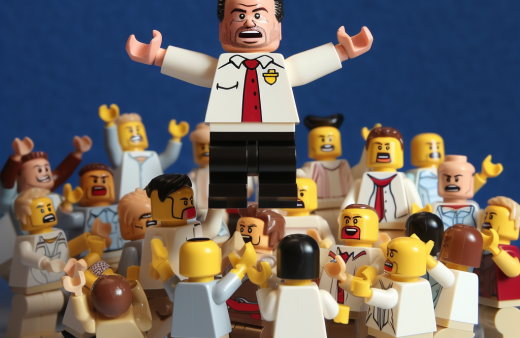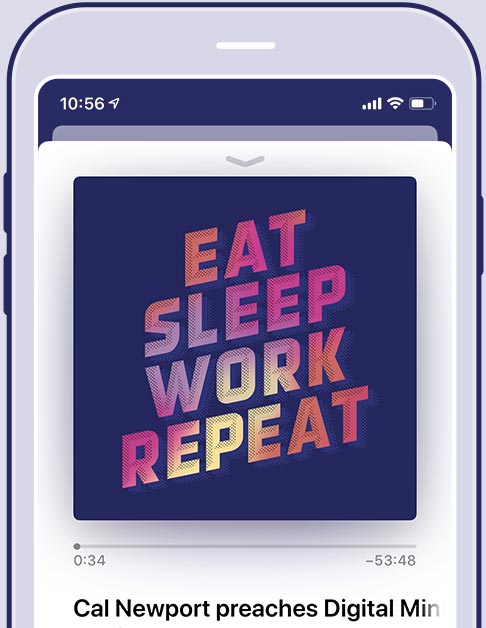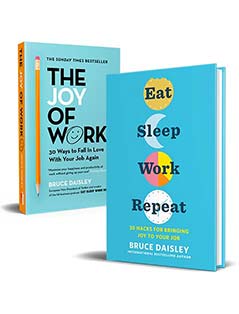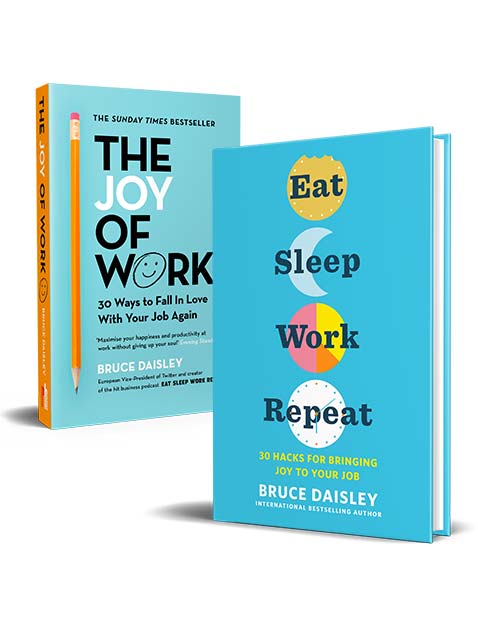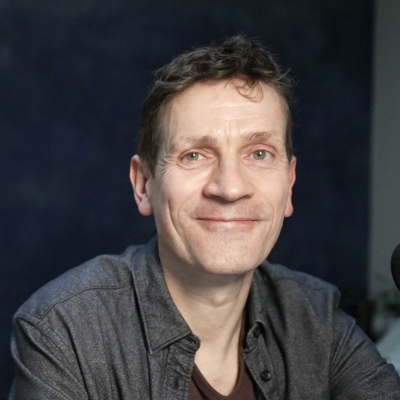Bjarke Ingels – Cultural Architect
My interest was chatting to Bjarke Ingels came about when I saw the design for the new Google Landscraper at Kings Cross. It’s a vast structure that runs alongside Kings Cross station train platforms. Like a tower block laid on its side it has a running track on the roof and all manner of innovations that most of us will never experience at work. While the external plans and photographs of these buildings are published, I was interested what was inside. What does the world’s rockstar architect set about creating inside work. Was it just going to be more open plan. I spoke to some other architects this week at a conference and the response I got to my criticisms of open plan was that the issue was with bad management, open plan wasn’t at fault. I was interested to get Bjarke’s view. I think his answer to this is thoughtful and really stimulating.
We talked through a number of BIG’s projects. There’s a lot of them opening right now. The courtscraper in New York, is sometimes called VIA West 57, the Lego House just opened in Copenhagen. We’re about a year away from a remarkable new power plant for Copenhagen that has a full ski slope and park on the top of that building. The powerplant is a good illustration of Bjarke’s sense of fun. The original design was to have smoke rings come out of the top of the factory. These would be CO2 plus water vapour and would signify the amount of CO2 coming out of the factory, so children could count it. Now – as Bjarke explains they’ve adapted that idea to keep the sense of play but to add to the symbolism of renewability.
Bjarke mentions a building at MIT. Building 20 was a famously messy temporary construction that was build of wood. The wood aspect was important because it meant a lot of the inhabitants ended up adapted, rebuilding and altering their surroundings to make it more suited for their teams. It was famous for being noisy, badly lit, it had a ill thought out design but it produced 9 noble prize winning physicists. If we’re debating how much our buildings shape our cultures then a lot of people have suggested a building that can be easily adapted is one way to harness creative cultures.
Bjarke also talks through one of his other early projects called the Infinity Loop or the 8 House. This was a mixed residential and business project that was a huge figure eight that effectively squished itself at certain corners to improve the daylight to apartments and hide it from offices. It looks like a huge bow tie. He explains the thinking behind that structure.
Myself and Bjarke talk about how he builds offices to create work cultures but we also go on to talk about the culture at BIG his company Bjarke Ingels Group. It’s immensely creative but one of the limitations of architecture is that 19 out of 20 projects that they create never happen. The client changes their mind, the budget is cut, someone else wins the commission. So how does he generate a creative culture and how do they deal with rejection.
Full transcript
I’ve seen you talking about the history of architecture as a series of creators who each were angry with what had come before. And I think your point was that by constantly attacking the past, they each were being predictable in what they created. Could we start with that?
BJARKE INGELS: I mean I think the emphasis is actually on being affirmative rather than reactive or reactionary.
So my big complaint about the typical idea of the avant garde as being revolutionary or being defined by who or what they are against is that you often have a negative definition and I like to say that even if your definition of your agenda is who or what you are against you are essentially a follower in reverse. I like to look at evolution at how things evolve and because life is always evolving. So should our cities. What was true yesterday might not be true tomorrow. And in that sense life itself is actually a constant source of change and transformation. Like in a way I like to say that as an architect your greatest skill is your empathy, your ability to put yourself in the place of the people you are designing and building for.
And because there is always sources of change in society and this change can come from technology, it can come from migration. It can be cultural change. It can be climate change. Wherever the change is coming from. It means that life is changing and somehow what was fitting yesterday suddenly doesn’t fit anymore.
That this change has has changed habits or activities in such a way that the framework that we designed yesterday for our lives doesn’t really fit anymore. And if as an architect you can open your eyes and your ears and identify those moments of change you suddenly get an amazing opportunity to accommodate new possibilities or to solve new problems. And in a way you get the possibility to give form to the future that we will soon all be living in.
I’m so glad you said that. As a novice to this, the one word I wrote down at the top of my notebook was ’empathy’.And in fact that was going to be my next question, I’m so glad you say empathy is a critical quality. One example of it was on the Infinity Loop, where you were moving desks and residential. The former hates sunlight and the latter loves it and you were thinking about the mindset of the people in your buildings.
But tell me this, what’s your process of gathering that empathy. Is it hunch? Is it instinct? Is there any way to check your instinct?
It’s a good question. First of all empathy is a form of creativity because you’re actually not feeling what the other one is feeling you are imagining what they may be feeling and in a way you try to put yourself in their place, in their shoes. So it involves a lot of a lot of imagination. And then I think secondly I’ve always thought Philippe Stark was quite smart when he said that he doesn’t design for a mass audience, he designs just for himself and a few of his good friends.
And he is and was at least one of the most successful and popular designers on the planet. But he was actually really just trying to make himself and a few people happy. It’s a good thing when you’re actually making something that you know that you yourself would like then you’re not designing for some kind of nameless, faceless crowd. You know that at least you’re making one person happy whereas if you’re designing for some kind of a generic statistical construct then you actually don’t know if anyone would like this even if it seems like the average would. The average Joe doesn’t really exist. It’s just a sort of a statistical construct. And then I think lastly you know a lot of the times when people ask you know what inspires you. What where do you go when you’re looking for inspiration.
I like to point out that in fact I do think that the ordinary is already incredibly exciting. The everyday life, the practical concerns and considerations of everyday lives.
You know living and working, playing whatever actually contains a tremendous amount of practical challenges and in some ways architecture is the art of turning the practical into poetry in a way it’s the art of creating something extraordinary out of the ordinary. So in that sense when you when you look at for instance at the Infinity Loop – this mixed use combination of spaces for working, for institutions, for shops, for town houses and apartments by actually taking a lot of like rather conventional quality criteria but really delivering them to the extreme we end up sort of creating a lot of diversity. So some homes gravitate towards the top some of the offices gravitate towards the bottom. The differences in typical depth between commercial and residential floor plates ends up creating ledges that actually have space for little gardens and small paths and suddenly we create almost like a mountain village where you can actually walk and bicycle all the way from the ground to the 10th storey penthouse.
So in a way the sum of all those little considerations actually becomes much more than the sum of the parts. You really get synergy between all those little pieces of practical poetry.
And the implication of that, absolutely, poetry is such a beautiful word for some of the breathtaking projects that you’ve got underway. I wouldn’t ask you to discuss particular clients but I saw in some of the press that you did for the Google Headquarters (I know that you’re doing the Google Landscraper in London and the Google HQ in California) you were quoted as saying you were helping them build Google 2.0. Which effectively feels like a cultural statement. You’re helping them build, and be fit for purpose for the new state of work. Taking for the start point that you say that you start from the perspective of one I’m interested in what you’ve thought about the modern working environment. I’ve noticed that your office at the old Carlsberg factory is open plan. Do you sit there contemplating the state of mind of people inside buildings. How do you set about trying to bring this to life?
I mean first of all when I can definitely see when we look at our own workspace, also I have to say that the architects are probably privileged by the fact that that the what we do is so physically present in our work environments. In a way as an architect you can have a rather raw and simple work environment because the models that you create, the pictures you create, the drawings you create. We make sure that everything is always pinned up. Models are always present in a way that everything we do is always physically manifest in the space we are working, because if things are hidden away in the computer they are also hidden away from from a spontaneous criticism or spontaneous comment that could actually trigger the next eureka moment. But that also means that for architects our environment our physical environment is so visually stimulating and physically stimulating because it’s crowded with evidence of the work we do. For other professions it can maybe be harder to create evidence of the activities you’re making.
But I do realise that it is specially if you’re dealing with innovation. If you’re trying to break new ground if you’re trying to enable collaboration then the best thing you can do is to make sure that what is going on in people’s heads and inside their computers is to the largest extent possible somehow physically manifest in the space where they’re working.
Because I also tend to realise that the best way to facilitate an open collaboration between many people with many different kinds of intelligence and the way you avoid that it becomes about my idea or your idea is that if that idea is always present in the form of a model or a sketch or drawing or statement then if someone is criticising it they’re not criticising me or the person who came up with the idea. They’re criticising the idea because the idea is there, it’s on the table between us. So in a way the best way to open up a creative process for incorporating input from the many is to give to make the idea or the project as physical and as physically present as possible because that then the conversation becomes about it not about what you said or what I said.
The outside, the structures of your buildings are these semi-magical, vivid dreams. They’re beautiful forms and you’ve been rightly recognised for that.The last few years you’ve gone on whether it’s the Lego House, or VIA 57. The Dry Line project is just incredible. I’m just interested, do you ever go back to a job and correct it? The Google structures on the outside are these incredible forms. But them as much as any you’re going to be tasked with something that works internally. Look, all of the buildings do. Infinity Loop had to work as retail space, it had to work as residential space. But the Google buildings are going to be required to have high quality creative work going on inside them. How do you set about saying ‘we’ve identified what the environment is where high quality creative work takes place. The critical thing I’m asking, I saw Mark Zuckerberg talk about the new Facebook building and he said ‘it’s got the biggest open plan space in the world’. Now the interesting thing for me as someone with work culture and studied that, all the evidence I see for open plan is that they don’t correlate with satisfaction at work, they don’t correlate with productivity and they don’t correlate with creativity. So I wonder as you’re commissioned to create a stre
I think with that with Google we were quite – I think the very real reason why we call it Google 2.0 – is actually that the Google until this date has never built a building. They have moved into existing structures and they have pioneered that you know the well-equipped snack kitchens with infinite supply of seaweed snacks and the foosball and ping pong and the colourful interiors and the colourful Google bikes. You can bike from one to one place to another. So they they’ve made a lot of innovations that have almost become the standard of silicon valley today but they’ve actually never built a building. So it’s always been like a hermit crab moving into structures left behind by former companies. When we started working with them, it just so happened that they just signed the lease for the Moffett airfield, the NASA airfield right next to Google’s campus in Mountain View. They had these really large hangars that have been left. They were hangars for Zeppelins from decades ago. Those hangars are like huge beautiful large spanning structures. Everybody from Google all the way up to the founders were super fascinated by these you know epic huge environments and the possibilities of what you could do inside. And then another thing that struck us is that they were all talking about this building at MIT and I always misremember the number but I think it was called Building 20. It was a building that was built entirely out of wood as a kind of temporary almost like barracks like structure to accommodate certain disciplines.
And this building in itself like rather crappy, straightforward timber frame architecture has been the host of a surprising amount of Nobel Prize winners and really groundbreaking scientific and technological discoveries and maybe the explanation was what was so good about that building was that it wasn’t precious. It wasn’t perfect and it was even made out of a material wood where you can easily drill a hole and mount a few things. Or you can even like stick saw, you can cut a hole to the neighbour space and run some pipes through it, if you want to conduct an even bigger experiment.
The freedom and the flexibility was actually an asset and the fact that it wasn’t perfect and precious actually made it more dynamic and free and flexible. So we came up with this idea that for a company like Google if you could say like a company like Apple is about restricting adaptability and making one perfect solution that in theory should fit all and Apple do it incredibly well. Google is much more about Open Source and about hackability. So we quite quickly coined the term that we wanted Google’s environment to be ‘hackable’ – that each and every engineer should be able to transform and adapt their their environment. And then the second thing we came up with was when you look at the organisation architecture of Google, you know Googlers, they sit in a team that bundles up into a community, that bubbles up into like larger and larger entities. We saidt that of a typical sort of community consists of up to between 100 and 150 Googlers. So inspired by the hangers we created these large open environments, we call it Sglomes – domes that are most or less square in plan. These environments had very few columns very large spans that’s why the architecture has this sort of gently sagging or hanging concave kind of architecture. And underneath this we bundled together a series of what we call ‘platforms’ or ‘tables’ basically really large platforms where you could sit around 150 Googlers, the equivalent of a community. Then they dock together so they touch each other but they also leave space between each other for courtyards where you can sort of descend to the level below where you have all the meeting rooms, all the social spaces, all the snack kitchens – like the more noisy and social activities. And then you can ascend up to this gently stepping landscapes of interconnected platforms. That means that in the end you actually have 3000 Googlers within roughly the same level and you can walk from one to the next to the next sometimes you go a few steps up sometimes you go a few steps down. So you actually have the local identity and the small scale of your community but you also part of this big common space.
So anyway we try to combine the best of both worlds and then an almost as a as a kit of parts we’ve designed we have designed but also other interior architects and furniture designers will be welcome to design small scale elements – what we call the human scale that some like roughly half the Googlers prefer a more focussed and enclosed environments (and the other half a more open environment). So with temporary elements from a wide variety of materials and designs you can create temporary architecture around you. We actually used Burning Man as a reference. Burning Man – this art festival in the desert – where actually a lot of Googlers and a lot of Silicon Valley people end up going. It’s a big empty white sheet of dust. But then for like one week it becomes like this explosion of creativity with temporary architecture. And in a similar way we were suggesting that maybe this environment could really…each team could express their local identity in various ways. But in this continuous environment, it’s not about some kind of minimalistic aesthetic of an open office where everything is the same but it’s almost like a canvas of creativity where each unit, each team can actually express their identity and maybe some of their big experiments are physically manifest in some form of the other.
So it’s sort of modular to some extent? Where tribes can self identity and self organise and put up barriers. Is that right? You’ve allowed teams to self define themselves?
Exactly.
Oh fantastic. I wonder if we could go on really briefly and talk about the culture at BIG. The thing that’s really struck me, I wrote down the phrase ‘vivid dream’ but the thing that really strikes me firstly is that 19 out of 20 projects that you work on don’t actually happen. How do you keep teams motivated when you have the constant failure and constant rejection built into what you do
That’s a good question. Maybe as an architect you have to have a certain healthy portion of optimism in order to be able to function and then you also develop elephant thick skin because if you get devastated every time a project dies then it’s going to be a very tough life you’re going to live.
But what I do think that we’ve always had this principle that rather than trying to figure out what would win in this particular competition. In a way rather than trying to give the jury what we think they want. We always strive towards making something that that we know would be super interesting and super relevant for us to do. If you compromise and then you fail then you have nothing – because you compromised AND you didn’t win. What if you if you really develop something that is really original. Really thought provoking.
That actually makes you learn something new in the process that actually opens maybe a whole new avenues of explanation. And then you lose then you have at least discovered all these amazing things you’ve actually generated new ideas. You’ve opened your eyes to a whole new world of exploration and the next time a similar challenge or another challenge comes around, those ideas are still alive and can be pursued. And then again if you actually compromise and you win then it’s almost even worse because then you actually have to you know spend the next five to six years of your life with something that you don’t believe in.
So in that sense I think this notion that artistic and intellectual discoveries is actually the drug that makes us high and of course we are. We’re put in this world to build buildings and happily more and more of the ideas that we put out there are ending up becoming built.
And I’m also seeing that more and more things that we developed or that we have been consistently in pursuit of – maybe even for a decade. Suddenly the time is right or the moment arises where that project actually becomes in demand.
Because I think the interesting thing about being an architect is that we can’t really say we would like to do this kind of building and then make it, like if you are an artist – a painter let’s say – you can go down to the art supply store and buy some paint and some canvas and then you can paint the painting you had in your head or that you were longing for because it’s gonna to cost you like 500 bucks. If you’re an architect you can’t really do this skyscraper that combines a cascade of interconnected double hig spaces into a spiral of terraces and staircases because it’s going to cost three billion dollars to do it.
So in a way as an architect you have to wait for the moment where what a client needs to have happen and has the resources to pay for can somehow be combined with what you would like to see happen and have the ability to demonstrate that this would actually make sense for other clients to realise.
So in that sense it becomes very important for an architect to attract the right clients with the right needs that somehow match what we are interested in and capable of creating. So in that sense I think for an architect it’s incredibly important that the signals you send out into the world are coherent with who you are and what you would like to do. And if you keep confusing the world by showing work that is not really that interesting because you compromised too much like you try to preconceive what the potential clients were looking for, then the signal you’re sending becomes like either weak or noisy whereas if what you do is consistently projecting a very clear picture and a very clear idea about who you are, what you’re about, what makes you tick. Then eventually the right people will receive that signal and they will come to you and you’ll have a perfect match of of opportunity and then the need of the client and the vision of the of you and your fellow architects.
Yeh I can really see that, the purity of your work… you’ve got some remarkable projects that are opening in the next few years. The purity of your work seems so complete, there’s very few projects on your website when you look at it and then there’s any sort of compromise. They’re so beautiful. Tell me this then, when you’re hiring someone into that culture, you’ve got this incredible culture at BIG and I read an article with you yesterday when you said it’s not just you, the people you collaborate with are wonderful. What do you look for when you hire someone, do you look for someone who can collaborate. Do you look for genius ideas that can stand alone? do you look for a combination of those things? how do you build a culture that doesn’t have compromise at the heart of it?
I mean first of all I have to say that I am very happy that I’m an architect because it is quite easy to a hire architects – because you can see what they do. If you’re hiring an accountant or a lawyer or some something that you have to go through like all kinds of tests and interviews and stuff. Whereas with architects just like the initial screening if the architect has a great portfolio. Then it’s probably going to be a great architett and if not, then probably not.
So that means when you arrive for the interview you already come quite quite a long way. I think in many ways we also attract the kind of people that are into our way of working and thinking. So I think there’s some kind of a self screening happening there.
But then then I actually like to remind my colleagues that take care of most of the interviews, that we’re actually not necessarily looking for a particular type cause I think what unites us is our work and our attitude towards work. And sometimes there are certain strengths in certain situations to being a very extroverted person. There’s also certain strength in being a very introverted person who used to dive down and dig in and crank it out. Some people have great social skills some people have great technical skills some people have both some people. So I think it’s quite important that we don’t end up like creating some kind of a stereotype of a particular personality because sometimes we think that the misfit or like the oddball or even some people that have some slight challenges with how they communicate with others can actually be quite creative to have on a team if you make sure that the team itself actually has enough of the right personalities. Also we definitely have architects that are not necessarily the best designers or even the best technical people but they have amazing people skills. And when you insert them into a team of 10 people suddenly that whole team starts functioning much better.
So I think maybe one thing that I can say is that in a way the way that I’ve designed my own job, I’m the founder and chairman of BIG obviously, but my role is somehow to be the chief visionary or the creative director. In the course of the last 17 years of my first company PLOT with another architect, Julien de Smedt, and then BIG I’ve had almost every responsibility at some point in time.
But as soon as I could I try to find someone who could take over that responsibility and do it as good as – or ideally better than me. In a way, keep like liberating me to do what I enjoy the most and therefore also excel at the most – which is working with the teams to create big ideas. In a way I’ve been looking for that in my colleagues as well. So if you look at my group of partners right now I have 11 partners and none of them have the same profile or even personality or skill set as me. Some of them are more universal but some of them have peaks in certain skills but they maybe like really lousy at other skills. And I think in a typical dysfunctional organisation people get promoted until they reach their level of incompetence. So someone comes in, they’re really good. You promote them and they get a slightly different role. They’re still really good. You promote them again. And at some point they reached a level where they have certain responsibilities that involve skill sets that they’re not very good at and then they get stuck doing that for the rest of their lives – because you don’t promote them again because they’re actually not very good anymore but you’re not firing them because they’ve been like good loyal soldiers. So then people end up stuck in a position where they’re doing something that they’re not good at and they probably don’t even particularly enjoy. So I’ve been I’ve been very conscious that for all the roles in the office including the partners it’s not like once you become a partner you have to do certain things.
There are some partners are purely internal and only deal with the designs team some partners are purely technical and deal with alive construction and some some partners are purely about outreach and business development. Some partners like tinkering with the products and more sort of nerdy scientific aspects. In a way it’s important to really look at what makes a person tick. What are their superpowers and then make sure that you end up forming the job around them rather than trying to fit different people into a uniform set of job descriptions you actually tailor the job description to fit the unique profile of the people you find around you.
It’s interesting that is because it’s a very unusual idea isn’t it? A lot of the time people say it’s ‘strategy then structure then people’ and actually I agree some of the best performing teams I’ve been a part of have been adapted around the quirks of different people to get the best out of everyone.
One of my dearest friends and greatest partners. He was hired as a typical architect. He wasn’t necessarily the best project designer but then he had other skill sets about around communications and partnerships.
And anyway so rather than trying to complain about the fact that he didn’t function the way that he had foreseen. We started saying well then why don’t you run with that instead and see where that can go. And I think a lot of the organisation and culture of BIG today is actually thanks to the fact that we liberated this guy from his from the responsibilities that you would normally expect from him and gave him something else that maybe other people wouldn’t care so much about. So in that sense if you can tap into people’s super power and if they’re actually doing the stuff that that makes them tick then they do it with so much more skill and so much more force. Because at the end of the day if you are fueled by passion rather than obligation then it suddenly becomes like living your life or playing rather than doing homework because you have to.
Yeah. Tell me – and this is probably like asking which of your children is your favourite but you’ve got some beautiful projects in the next few years and I know the LEGO house has just landed. What’s the one that you’re most excited about?
I mean I would say that there’s probably a handful I also like different projects allow you to pursue different dreams but maybe I’ll mention one or two. We just broke ground on the habitat for the two giant pandas of the Copenhagen Zoo. And it’s been so fun too. I mean it’s got to be the cutest clients I’ll ever have – the two pandas. We were talking about empathy and you know I had to sort of imagine what does a panda want. They’re from China so I don’t understand what they’re saying. So we had to ask a lot of zookeepers and zoologists to speak on their behalf. And like two things we discovered: one is that actually they climate they come from is almost exactly the same climate as the climate at Copenhagen. So we could realise this dream of indoor, outdoor. The big fluffy fur they have is not just to be cuddly it’s actually because they they can enjoy a little bit of a winter. So we could realise this dream about indoor outdoor.
So we’ve also created a habitat where there is no back of house. So you can see the pandas at all time. We’ve created that possibility when when the female starts nesting she needs to be able to create a more private environment.
But as you can see both the zookeepers and the pandas at any time no matter what they’re doing. And then the second thing we discovered was even though pandas seem so cute and friendly – which they also are. They are also very solitary so they can’t cohabit the male and the female if you would put them into the same habitat they would get into a fight. And that sense they might be quite similar to humans! So in that sense we’ve had to create a habitat that is one biotobe tailored for pandas but is somehow separated in a section for her and a section for him. We actually ended up designing it so when you look at it from above it really looks like Yin-Yang. An enclosure for the male and a female that forms a unified circle. And then we’re using undulating landscape, level changes so that you can sometimes see the pandas from above and sometimes at eye level. Even at a restaurant we lowered the floor so you can look into the eyes of the panda. Trying to maximise the intimacy and the proximity to the animals. I think that that’s been like great fun to do this little exercise and really to sort of learn about a panda that I thought I knew that I already knew a lot about. But once you start digging into it there’s a lot to be discovered.
I love it and you really caught me by surprise. I was expecting something else, you’ve got these big and collossal projects that you’ve worked on – Redskins park, the Dryline that I love. I didn’t expect you to say something – like you say filled with empathy for these animals.
There’s also like another funny thing is like, I think maybe something that I’ve noticed is at the core of what we do often is what I like to call bigamy. The fact that you you often don’t have to choose between one or the other. Quite often there is a third way where you can actually have both.
And I think quite often innovation comes when you combine things that you would normally see as mutually exclusive. But when you join them it actually forms a new entity that combines the qualities of both sides into a new hybrid that anyway points the way forward. Some of the obvious examples is that the we’re doing the Courtscraper that we just finished in New York that combines a European courtyard building with the density and verticality of a skyscraper into this new hybrid of a warped pyramid with a oasis in the heart of the city block. And also we’re doing a stadium in Austin that is actually a combination of a European soccer stadium and an all American rodeo. Which is the ultimate sort of ‘surf and turf’ combination of European and American archetypes. And I think these kinds of projects like we’re doing a power plant in Copenhagen that is so clean that we could turn the roof into an alpine ski park.
So tell me on that… I love that project. I love the smoke ring on it but I could almost see some of your working, because I saw the first incarnation of that and you had his ring of compressed carbon dioxide and then did you discover that carbon dioxide would never be visible because now it’s a steam idea isn’t it? It’s changed slightly, how did that one evolve.
So it actually evolved exactly because what you’re saying we realised that the smoke was actually so clean that the only visible part of it was the steam and then we also realised that even though there was something cool about radical transparency being sort of open about the fact that there is a small amount of CO2 coming out of the power plant.
We also thought that since we’re working with the steam that’s the visible part maybe it could really be a complete transformation of the symbolism of a chimney that every child knows that the chimney has something bad because that’s where all the pollution comes out. What if in the future a chimney could be something playful that puffs a ring of steam every time we have reduced carbon emissions with a ton or 10 tons or whatever. So that what comes out of the chimney is a celebration rather than a symptom. Suddenly it really started you know A) it became much easier for us to do it technically because we could actually see what was coming out and B) it really becomes a perfect inversion of a negative symbol into a positive.
And then of course like I think a project like the power plant is important because in a way it becomes a powerful landmark for the fact that clean technology is not just morally more justified or we have a cleaner conscience if our energy is clean. No it’s also radically different. It’s not just good for the birds.
It actually becomes radically different for the inhabitants of that city because it now in Copenhagen in one year we can actually hike and mountain climb and alpine ski on the roof of our power plant. So green technology means that that factories and power plants don’t have to be these cancerous areas on the city map.
You know something you have to be as far away from as possible. No no you can hang around on the roof of these structures because you almost literally have clear mountain air on the roof of this power plant. And I love this idea that when you open Google Maps and like city tissues is kind of a yellow, streets are white, parks are green, building are red, industrial areas are grey. But in the future this is not going to be grey. It’s going to be green because it’s going to be a public park. So in that sense green technology is… like a long time ago we came up with this idea of ‘hedonistic sustainability’ which a lot of people would think is a more an oxymoron that hedonism and sort of enjoyment is the opposite of this kind of Protestant idea that it has to hurt to do good… cold showers to save energy. No. If if we design our cities and buildings with the right mindset, sustainability be it actually becomes a driver for increased quality of life. And I think our first project ever I see the Copenhagen Harbour Bath is an example of that, that a clean harbour is not only good for the fish it’s also amazing for the citizens of that city. You don’t have to sit in your car for hours to get to the beach. You can actually jump in the port in the middle of the city. And now of a power plant that you can ski on the roof means that suddenly you actually get alpine skiing in an otherwise flat city such as Copenhagen.
That sustainability and hedonism could actually be two sides of the same coin.
